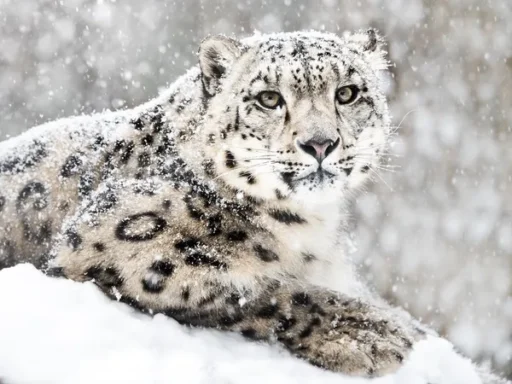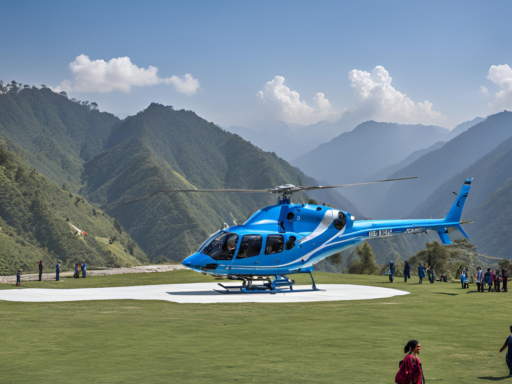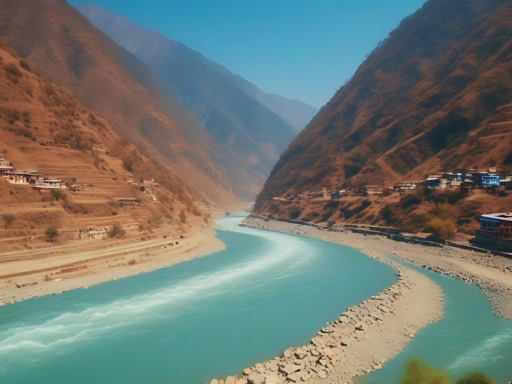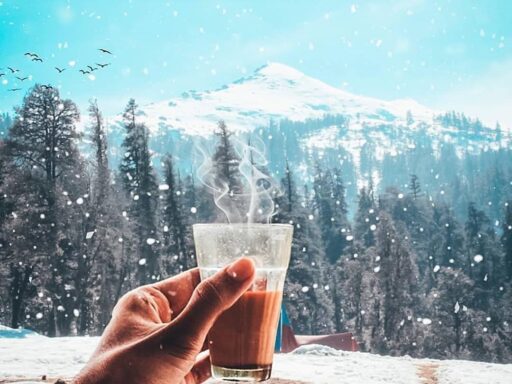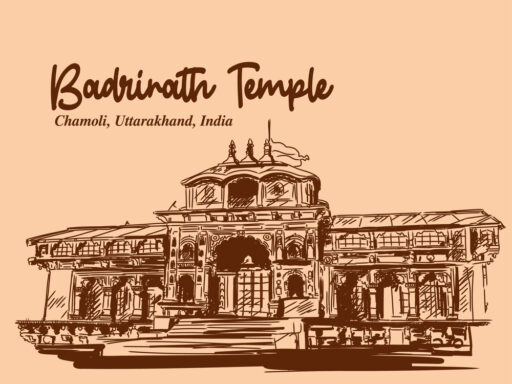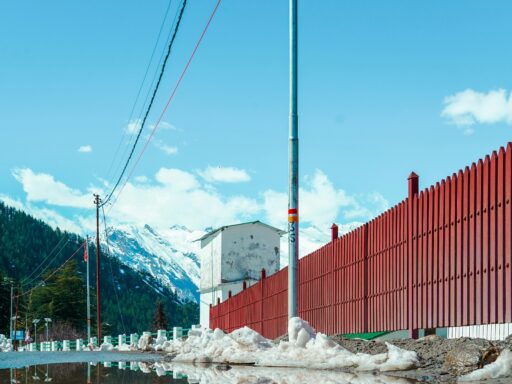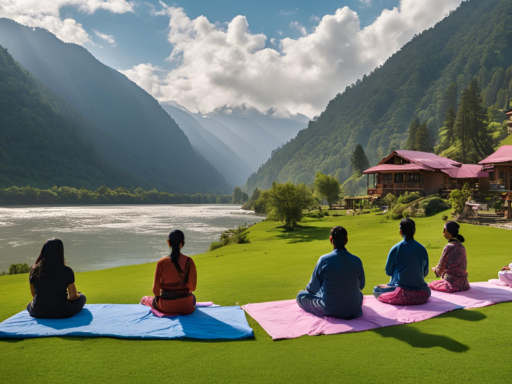Gangotri National Park, situated in Uttarkashi, Uttarakhand, covers an area of 2,390 square kilometers. Renowned for its diverse wildlife, including the elusive snow leopard and musk deer, the park also features alpine meadows and dense deodar forests, offering naturally challenging trekking routes. The park is accessible via Uttarkashi and Harsil, with the nearest airport located in Dehradun. It is approximately 500 kilometers or a 12-hour drive from New Delhi via Dehradun.
Table of Contents
Quick Facts : Gangotri National Park
- Established: 1989
- Area: 2,390 sq km
- Elevation: Between 1,800 to 7,083 meters
- Location: Uttarkashi, Uttarakhand
- Key Wildlife: Snow Leopard, Musk Deer, Himalayan Black Bear
- Bird Species: Himalayan Monal, Koklass Pheasant, Golden Eagle
- Best Time to Visit: May to November
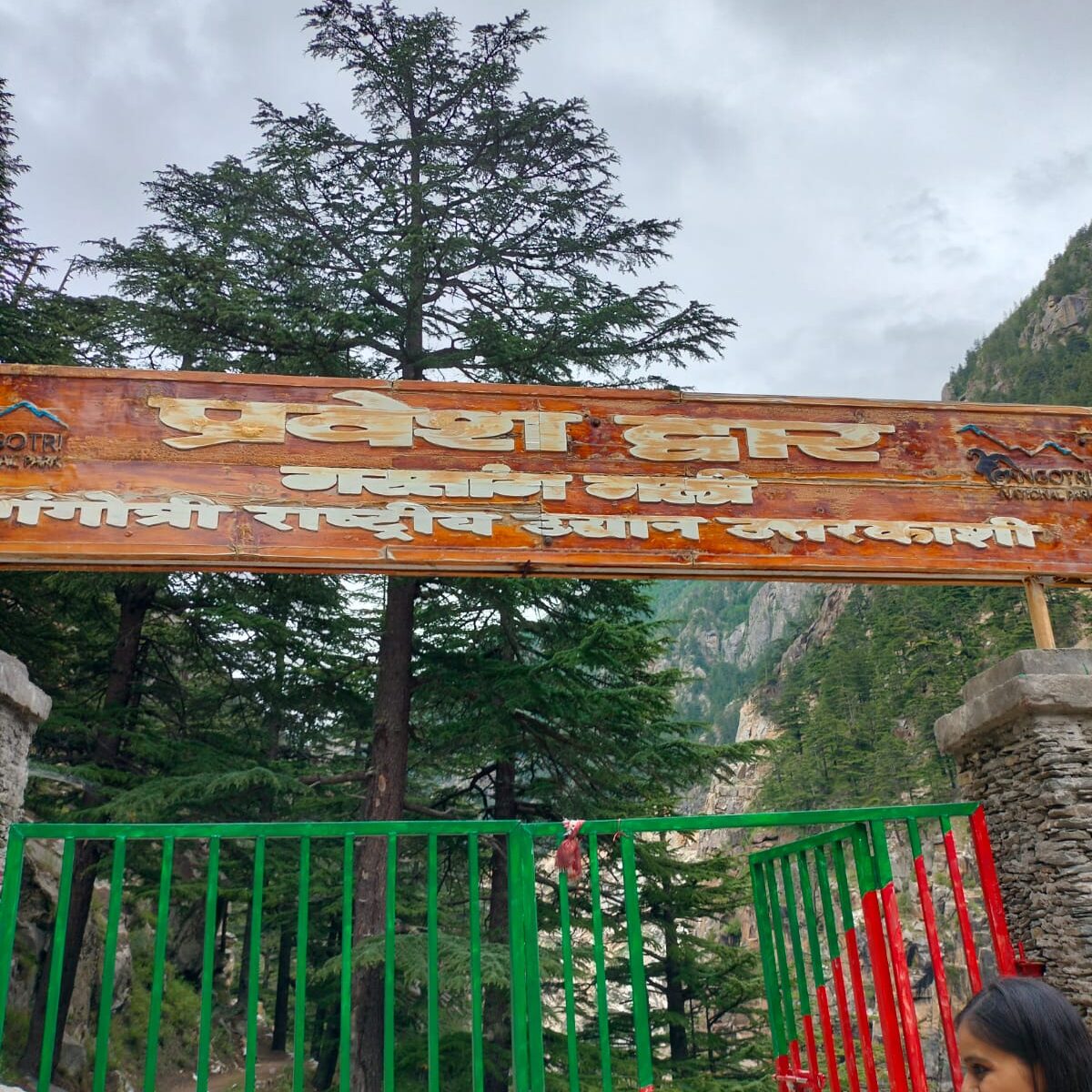
Historical Overview
Gangotri National Park was founded in 1989 with the mission of preserving its unique high-altitude ecosystem, characterized by rugged mountains, glacial rivers, and alpine meadows. Today, it stands as a sanctuary for nature lovers and adventure enthusiasts alike.
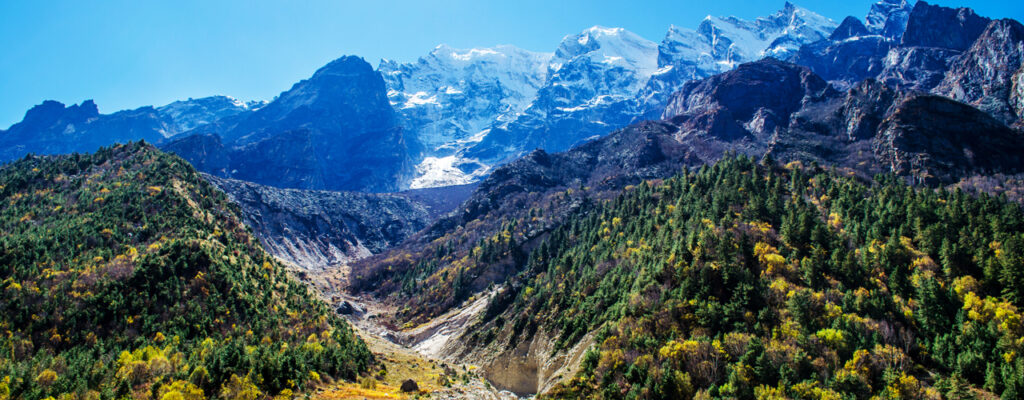
The Geology and Terrain
Gangotri National Park is a blend of high-altitude mountains, glaciers, and alpine meadows. It sits in the upper catchment of the Bhagirathi River, fed by the majestic Gangotri Glacier, one of the largest glaciers in the Himalayas. This glacier, spanning 30 kilometers, is a vital source of water for the region but has been gradually retreating due to the impacts of climate change.
Within the park, the landscape is shaped by the glaciers that have carved valleys, cirques, and moraines over millennia. The dramatic peaks, including Bhagirathi I, II, and III, soar above 6,000 meters, creating an awe-inspiring backdrop for visitors.

THALAY SAGAR
Iconic Peaks
The Gangotri National Park offers magnificent views of peaks like Thalay Sagar (6,904 meters), Shivling (6,543 meters), and Meru (6,660 meters). These mountains are sought after by mountaineers and trekkers, providing challenging expeditions for thrill-seekers.
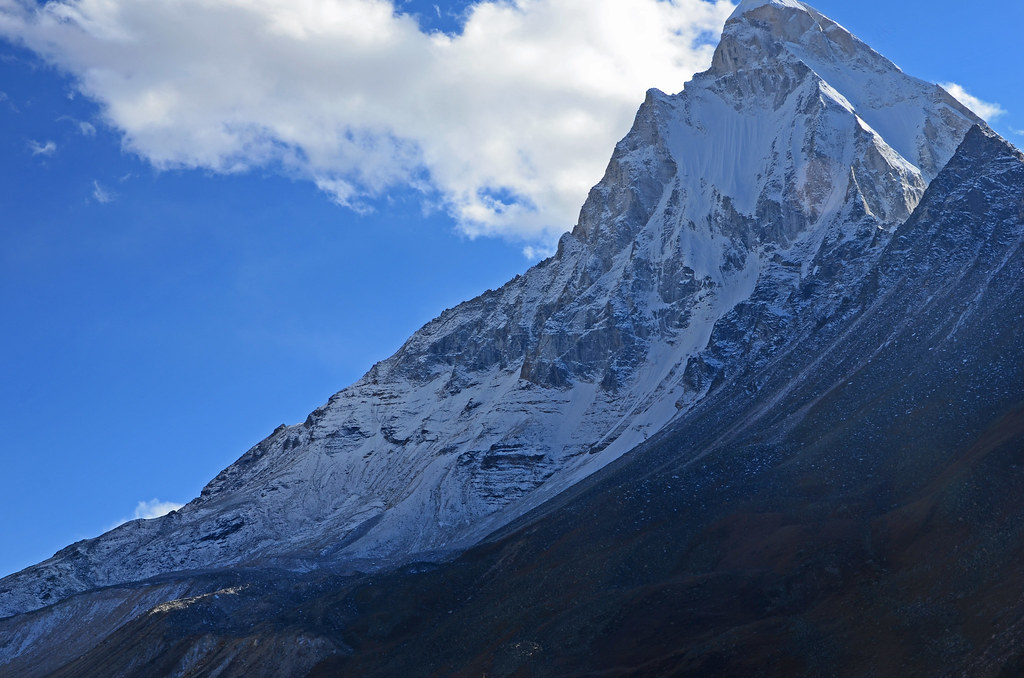
MERU PEAK
Flora at Gangotri National Park
The park is home to a variety of forests and plants, which change with altitude. Lower altitudes feature subtropical pine forests, while the higher elevations give way to temperate forests of oak, rhododendron, and deodar. As you trek upwards, you’ll encounter the park’s stunning alpine meadows, carpeted with wildflowers during the warmer months.
Key tree species in the park include:
- Deodar (Cedrus deodara)
- Blue Pine (Pinus wallichiana)
- Oak (Quercus leucotrichophora)
- Maple (Acer caesium)
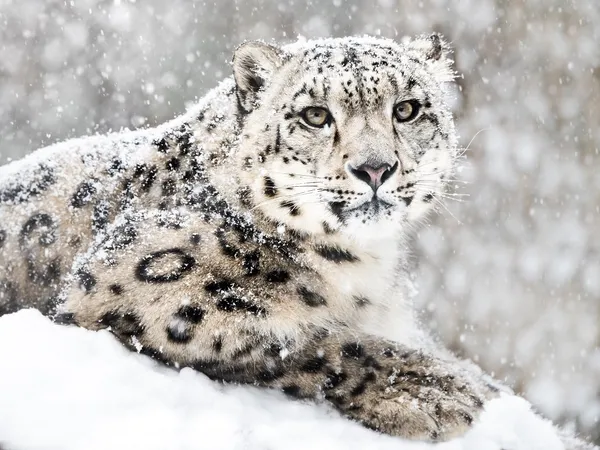
Wildlife in Gangotri National Park
Gangotri National Park is a haven for several endangered and rare species. Forest officials have installed 25 camera traps in the area for the estimation process, and all are above the height of 3000m. Among its most famous inhabitants are the elusive Snow Leopard and the Himalayan Black Bear. Source
Gangotri National Park is grouped into five major forests types: Himalayan moist temperate forest, Himalayan dry temperate forest, sub-alpine forest, moist alpine scrub and dry alpine scrub (Champion and Seth, 1968). So far, 15 species of mammal and 150 bird species have been documented from the park (Parmanand et al., 2000) which includes Snow leopard (Panthera uncia), Black bear (Ursus thibetanus), Brown bear (Ursus arctos), Musk deer (Moschus chrysogaster), Blue sheep or Bharal (Pseudois nayaur), Himalayan tahr (Hemitragus jemlahicus), Himalayan monal (Lophophorus impejanus), Koklass (Pucrasia macrolopha) and Himalayan Snowcock (Tetraogallus himalayensis). Source
“During patrolling, we sighted snow leopards, whose movements were captured by us. We have now removed the camera traps after which the images are being studied. The information so far shows that the ecology of the park is flourishing”
Pratap Singh Panwar, range officer of Gangotri National Park
The Park’s Climate and Weather
Due to its high-altitude location and proximity to the Himalayas, Gangotri National Park experiences a severe cold. For most of the year, the weather remains cold and dry, with heavy snowfall blanketing the region during winters. The summer months, from April to June, offer moderate daytime temperatures between 10 and 15 degrees Celsius, though nights can still dip to freezing. The monsoon season (July to September) brings with it heavy rains, which can lead to landslides and challenging trekking conditions. Planning a visit between May and November ensures a safer and more comfortable experience.

Best Time to Visit Gangotri National Park
Gangotri National Park is best explored from May to June and September to November, when the weather is ideal for trekking and outdoor activities. During these months, clear skies and pleasant temperatures make for a perfect visit. Gangotri National Park remains closed in winter due to heavy snowfall, while the monsoon season brings the risk of landslides, making travel unsafe during those times.
The Uttarakhand Forest Department on Monday 1st April 2024, opened the gates of Gangotri National Park for tourists and mountaineers. As per source the lock of the gate at the Kankhu barrier of the Gaumukh-Tapovan track was opened after performing a puja.
Trekking Routes at Gangotri National Park
Trekking is a highlight in Gangotri National Park, offering stunning Himalayan views. Popular routes include the Gangotri-Gaumukh-Tapovan Trek, leading to the Gaumukh Glacier and Tapovan meadow; the challenging Kedar Tal Trek to a glacial lake; and the Sat Tal Trek, known for its seven lakes and wildlife.
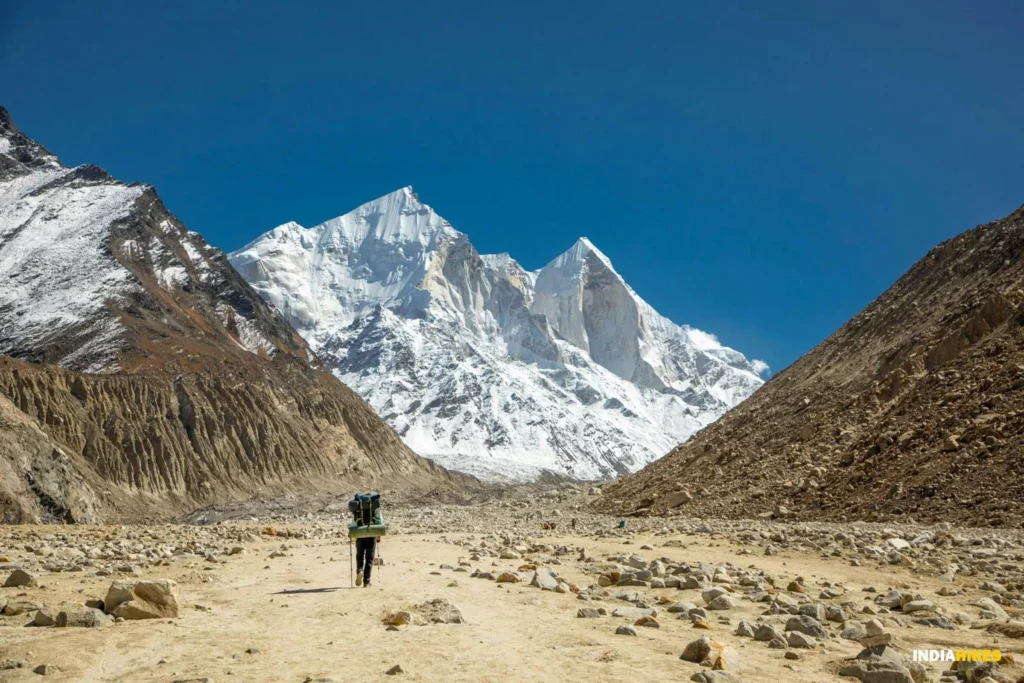
Gangotri-Gaumukh-Tapovan Trek
The Gangotri-Gaumukh-Tapovan Trek is one of the most iconic trekking routes in the Indian Himalayas, offering breathtaking views of towering peaks and glaciers. Starting from the sacred town of Gangotri, this 46 km trek takes adventurers to the Gaumukh Glacier, the source of the holy River Ganges, and further to Tapovan, a high-altitude meadow known for its stunning panoramic views. The best time to trek is from May to June and September to October.
The trek offers a perfect combination of spirituality and adventure. Along the way, trekkers pass through dense pine forests, cross glacial streams, and marvel at the majestic Bhagirathi peaks. The rugged terrain, high-altitude challenges, and serene environment make it a favorite for both pilgrims and trekking enthusiasts.
Key highlights of the trek include:
- Gaumukh Glacier: The origin of the Ganges, located at 4,000 meters.
- Tapovan Meadow: A picturesque high-altitude grassland, offering views of Mount Shivling and Bhagirathi peaks.
- Abundant wildlife, including Bharal (blue sheep) and Himalayan birds.

Kedar Tal Trek
The Kedar Tal Trek is a high-altitude trek leading to Kedar Tal lake at 4,750 meters. The glacial lake is surrounded by the Thalay Sagar and Bhrigupanth peaks. The trek spans 18 km with steep ascents, passing through alpine forests, waterfalls, and mountain views. It is suitable for experienced trekkers. The best time for the trek is from May to June and September to October.
Accessibility
- Starting Point: Gangotri
- Nearest Airport: Jolly Grant Airport, Dehradun
- By Road: Accessible via road from Uttarkashi, with buses and taxis available.
Gangotri National Park – Nearby Attractions
While visiting Gangotri National Park, take the opportunity to explore nearby landmarks:

Gangotri Temple
Gangotri Temple is a major Hindu pilgrimage site in Uttarkashi district, Uttarakhand, India. It is dedicated to the goddess Ganga, marking the spot where she is believed to have descended from the heavens.
- The temple is a crucial part of the Char Dham Yatra, a holy pilgrimage circuit in the Himalayas. Pilgrims visit to seek spiritual purification and blessings also It holds special importance during the Ganga Dussehra festival. The best time to visit Gangotri Temple is between May and October for the best experience, as the weather is more favorable.
Weather at Gangotri Temple
- Summer (May to June): 15°C to 25°C, pleasant for travel.
- Monsoon (July to August): Heavy rainfall may lead to landslides and travel delays.
- Autumn (September to October): Clear skies and comfortable temperatures.
- Winter (November to April): Extreme cold and snow can make the area difficult to access.
Accessibility
- By Road: 250 km drive from Dehradun.
- By Air: Nearest airport is Jolly Grant Airport in Dehradun; then travel by road.
- By Rail: Nearest railway station is Rishikesh; requires a road journey from there.
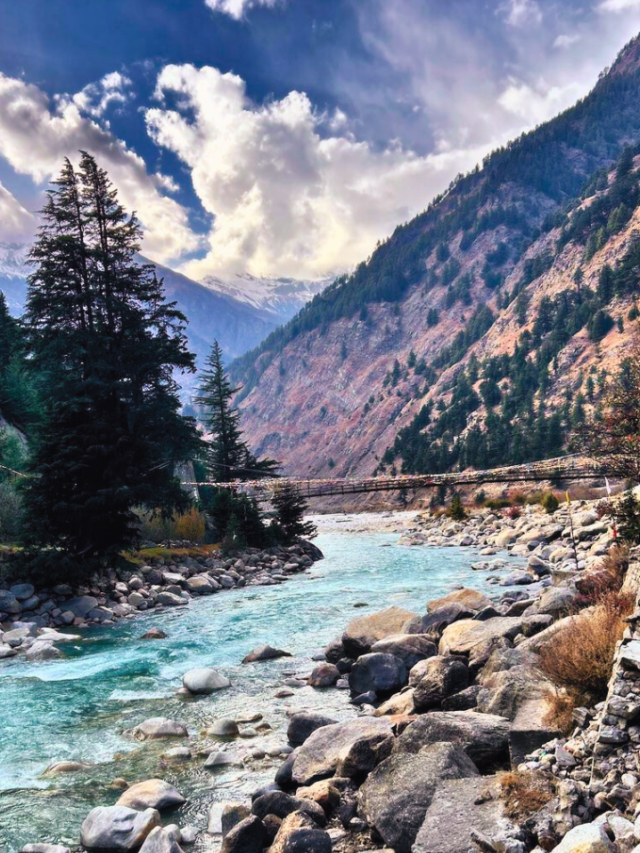
Harsil
Harsil, a village in Uttarkashi district, Uttarakhand, is a key stop for travelers heading to Gangotri Temple and for its apple orchards. It is accessible from Delhi and Dehradun by road. From Delhi, Harsil is about 450 km away, and from Dehradun, it is around 70 km. The best time to visit is from May to October. Weather during this period ranges from 10°C to 20°C. In monsoon, heavy rainfall can cause travel disruptions. Top 5 Places to Stay in Harsil
Weather at Harsil Valley
- Summer (May to June): Temperatures range from 10°C to 20°C, offering a cool respite.
- Monsoon (July to August): Heavy rainfall can cause landslides and travel disruptions.
- Autumn (September to October): Clear skies and comfortable temperatures.
- Winter (November to April): Cold temperatures and snow may make access difficult.
Accessibility
- By Road: Harsil is approximately 70 km from Uttarkashi, accessible by road.
- By Air: The nearest airport is Jolly Grant Airport in Dehradun, followed by a road journey.
- By Rail: The nearest railway station is Rishikesh; requires a road trip from Rishikesh.
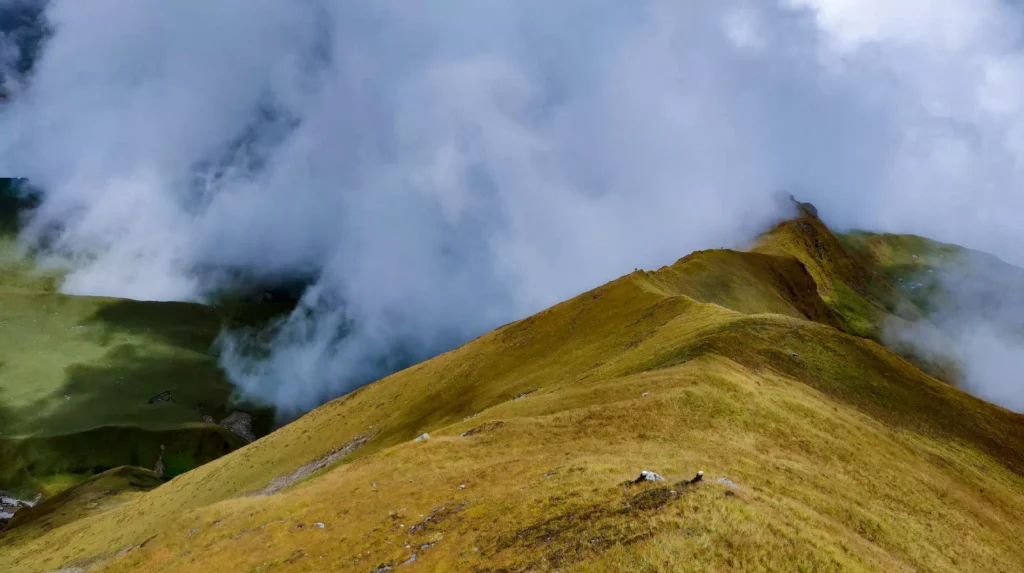
Dayara Bugyal
Dayara Bugyal, located in the Uttarkashi district of Uttarakhand, is a high-altitude meadow popular among trekkers. It is accessible from Delhi and Dehradun by road. From Delhi, Dayara Bugyal is approximately 450 km away, and from Dehradun, it is around 150 km. The best time to visit is from May to October. During this period, temperatures range from 10°C to 20°C.
Weather at Dayara Bugyal
- Summer (May to June): Temperatures range from 10°C to 20°C, suitable for trekking.
- Monsoon (July to August): Heavy rainfall may cause travel disruptions.
- Autumn (September to October): Clear weather with temperatures between 10°C and 20°C.
- Winter (November to April): Cold temperatures and snow may limit access.
Accessibility
- From Delhi: Approximately 450 km by road.
- From Dehradun: Around 150 km by road.
- Access: Travel involves a drive followed by a trek to reach Dayara Bugyal.
Conservation and Sustainable Tourism
Gangotri National Park is not just a destination for adventure but also a symbol of conservation efforts. Its protected status helps preserve the fragile ecosystems and endangered species that thrive in the region. Visitors are encouraged to practice responsible tourism, ensuring that the park remains a natural treasure for future generations.

